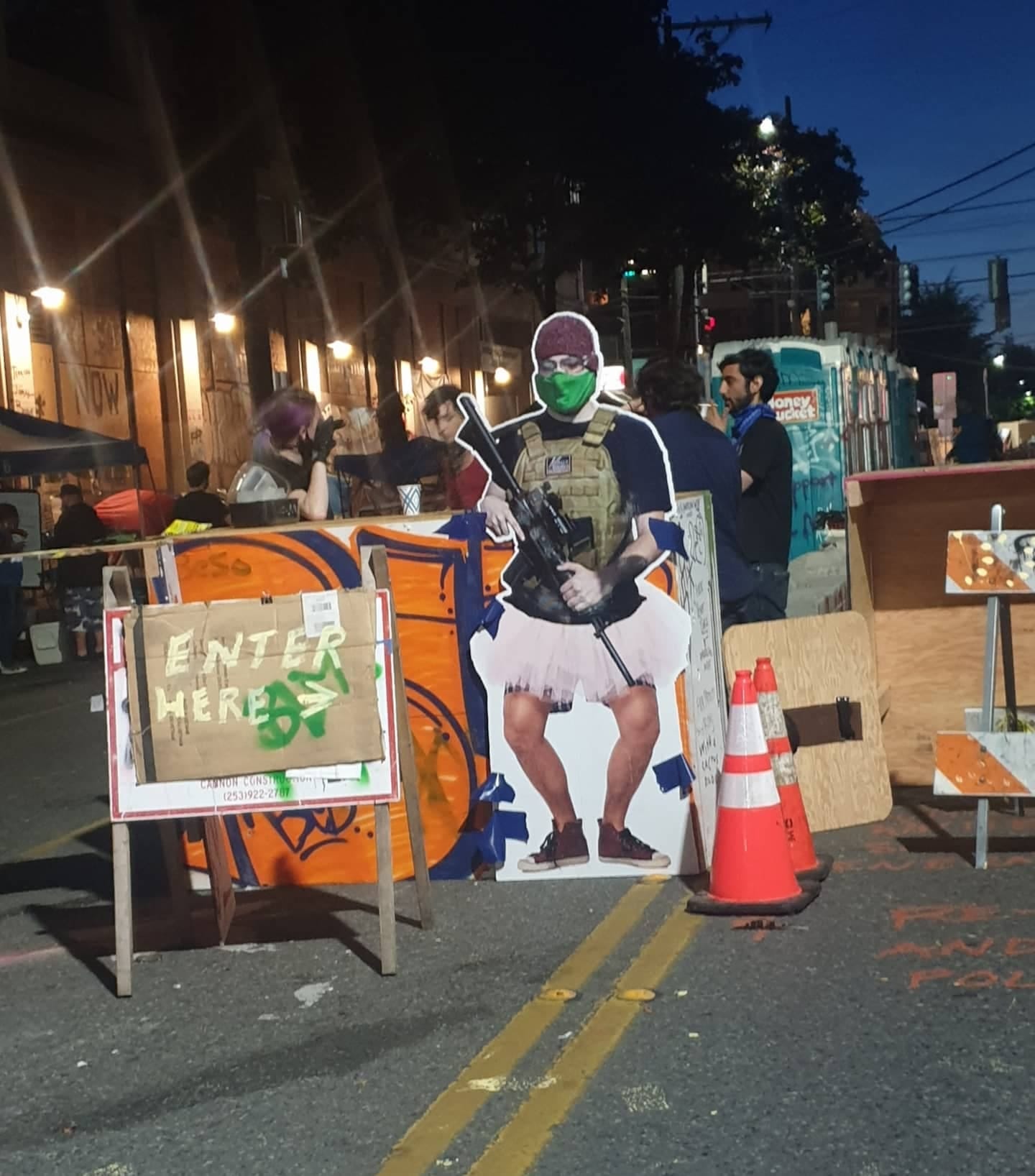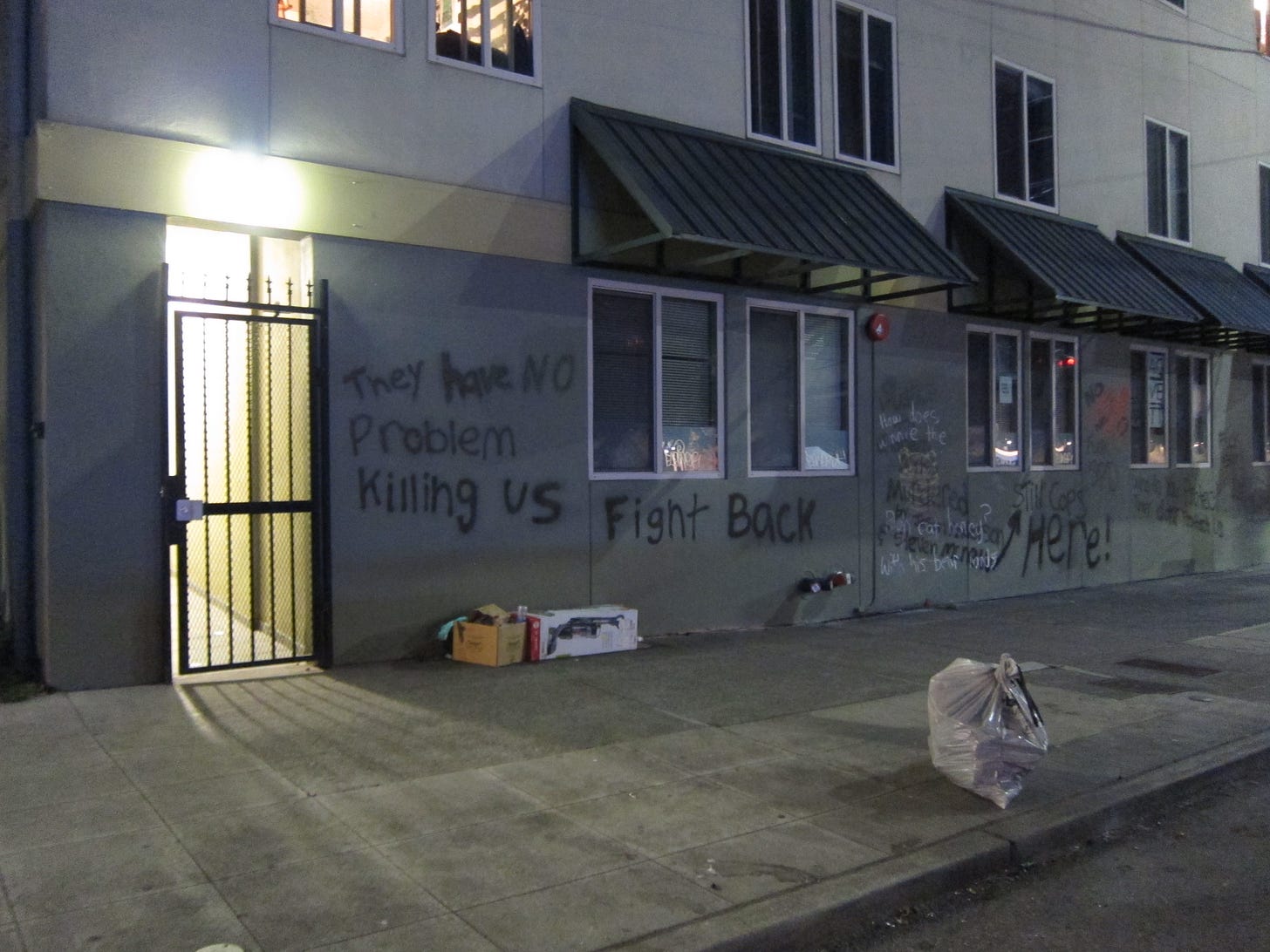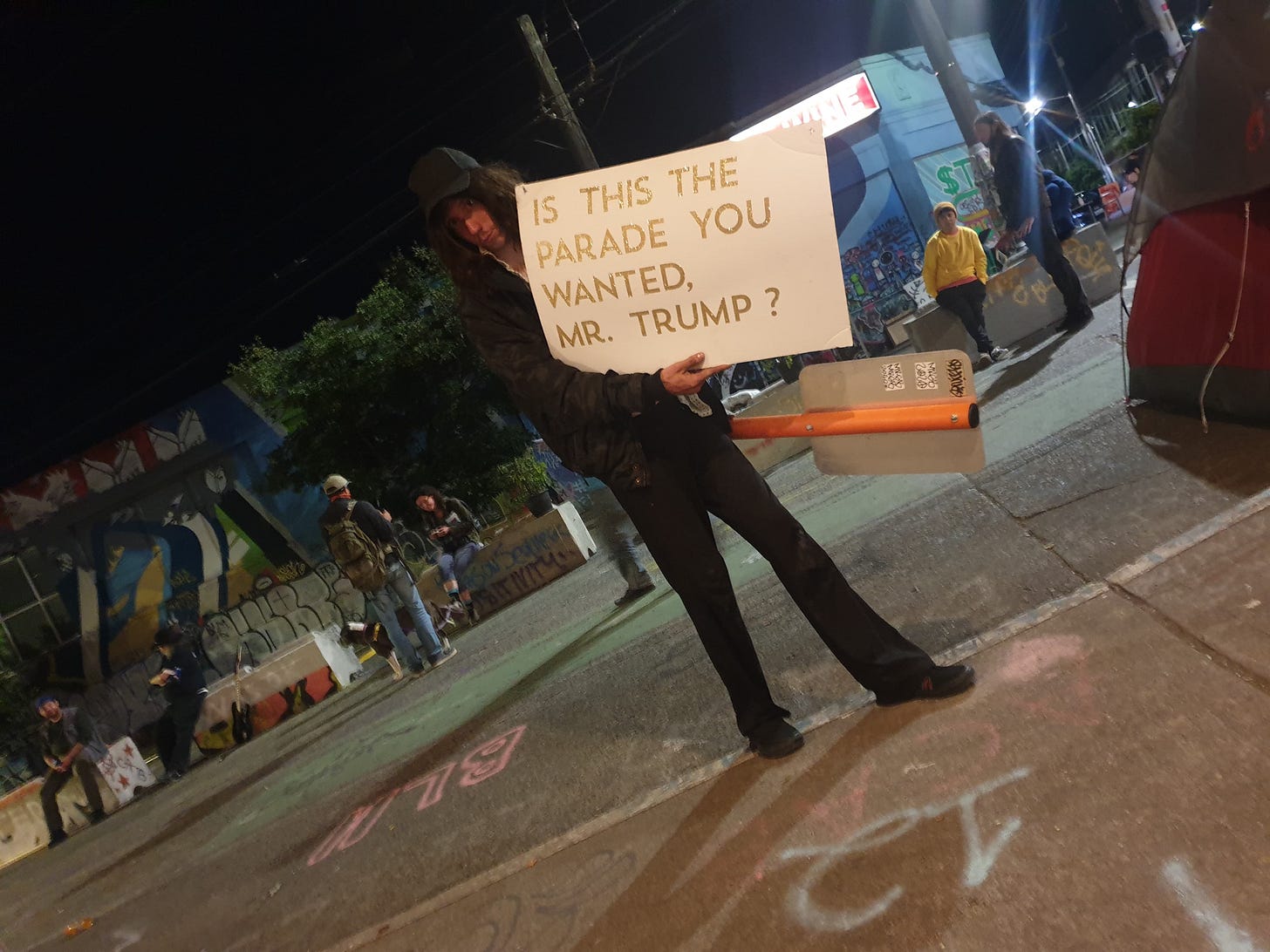LIVE FROM THE CHOP
My chaotic first night in Seattle's cop-free protest zone
Welcome to Rave New World, a newsletter on the intersecting futures of nightlife, drugs, and counterculture. For the next week or two, I will be reporting from the CHOP in Seattle, and this newsletter will take a more spontaneous liveblog form. Today, a recap of my chaotic first night in the zone—an intense experience that’s set the stage for the CHOP’s final stand this weekend. This is my first reporting trip for Rave New World, and this project is supported entirely by readers like you—if you’re digging it, please spread the word on social media to like-minded freaks and friends.

After days of anxious anticipation, I’ve finally landed at the CHOP—a six-block zone in Seattle’s Capitol Hill where protestors have been camped outside an abandoned police precinct for the past few weeks. The story of this occupied zone has been twisting at whiplash speeds. Last weekend, at least three shootings around the zone resulted in the death of a 19-year-old and several critical injuries, bringing an end to a radical era that someone described to me as “Burning Man meets Black Lives Matter.” Bowing to public pressure (residents in the zone even sued the city for financial hardship and disruption), Seattle’s Mayor Jenny Durkan has vowed to clear out the area soon—and I’ve watched all this unfold from afar, with mounting fears that by the time I arrived, the protest/party would be over.


I walk into the CHOP around 10:30pm, past a few barricades and the watchful eyes of the antifa security. The area is a ghost town—only a few dozen people remain, mostly hanging out in clusters by their tents, while the walls are covered in graffiti, handmade signs, and letters, the only remaining traces of the spirited activity that’s made this place the heart of America’s memetic culture wars in the past few weeks. Outside the abandoned police precinct, a drunk guy immediately asks to take my photo as if we’re at a tourist landmark, alcohol heavy on his breath as he slurs the question on everyone’s lips: “Why are you here?”


A few steps away, a skeleton camera crew is interviewing one of the CHOP’s de-facto leaders, an organizer named Mark Anthony, who looks worn and subdued, answering questions about the protestor’s demands with a voice cracking with exhaustion. Next to him, a spontaneous conversation blooms between two strangers about police alternative programs such as Portland Street Response, which received $4.8 million in funding this month to send medics and crisis workers as first-responders instead of police. (Not enough funding compared to the police department’s $241 million budget, they conclude.) After the news cameras leave, I introduce myself to Mark, who smiles warmly and asks me, “why are you here?”
Because… it feels historic, I stutter, struggling to organize my thoughts into coherence. Now that I’m here... the power of this place is really moving. It’s true: there is a palpable energy radiating from the precinct that makes the hairs on my body stand on end. “It’s been a rollercoaster,” says Mark, “Lots of highs and lows. Too many people treating this place like a party, or coming to just get free food.”
Mark also tells me that at least one of the shootings were gang-related, none of the violence has occurred within the CHOP’s actual perimeters, and that police purposely stalled to enter the zone when called for help—in order to prove a point. So what happens when the police come to reclaim the precinct, what’s the plan? I ask. “That’s when we move—that’s what movements are about,” Mark says. “We never planned to stay this long, and I’m tired.” On that note, he says goodbye and retreats to get some rest.


A couple kids sitting on the stairs of the precinct start lighting up a dab rig with a blow torch while chatting about the relatively cheap prices of oils and concentrates in Seattle. When I ask for a dab, they enthusiastically offer me the first hit. It turns out these kids have been with the protest since day one, and they start to fill me on how the movement has evolved. “The important thing to understand is that all this was spontaneous,” one of them says, a long-haired and barefoot dude who claims to have coined the name CHOP. “We had no intention to take over the precinct, it kinda just happened—and no one had a real plan.”
Suddenly, the evening takes a nightmarish turn when one of the kids slumps over in his chair and turns ghostly white. “I’m having trouble breathing,” he says, “I need CPR.” He falls out of his seat and lies on his back, sprawled on the ground right in front of the precinct’s doors. I can’t breathe… he croaks.

The next few minutes are a surreal frenzy as we search for a medic and water. A few bystanders stop to try and help, but the sounds of a shouting match and broken bottles erupting nearby are a distraction. Finally, after what feels like an excruciating wait, a medic swoops into the scene and takes the guy’s vitals. It turns out, his oxygen levels were normal—everyone concludes that he’s having a weed-induced meltdown. Just as I start to breathe again, another stranger wanders up to our group and starts staring me down, twitching and manically asking over and over for my name. I take this as my cue to leave.
Just as I start wandering back to the barricades, a young black protestor grabs me by the arm. “I haven’t seen you around before,” he says, “Why are you here?” I take a long look at him and finally blurt out what I’ve been thinking: “I came because this sounded like a radical social experiment about what a non-police state could look like, but now that I’m here, it just feels like a fucking mess.” He pauses, then grabs a black woman nearby and declares, “Michelle just came from Los Angeles and thinks the movement is dissolving.” She looks at me and says, “We’re stronger than ever. All the people who were here to party have left, and it’s just the hardcore believers who’ve stuck around. The mayor said she’s going to send negotiators first before the police come back, and we’re not leaving until our demands are met.” I want to chat more, but a raver dances in between us spinning giant glowsticks, and the woman becomes distracted by her circle of friends. A zombie-like protestor wanders by, holding up signs in exaggerated photoshoot poses for no one.

It’s nearly 1AM and I’m exhausted from my flight, so I slink away, back to the house where I’m staying, and woke up to the news that the mayor sent construction workers at dawn to remove the barricades. Those workers ended up leaving after intense negotiations, and the protestors have the next 72 hours to figure out their game plan. What will the final days of this radical protest zone look like—is this the CHOP’s last dance? I’m about to find out, stay tuned.
Rave New World is supported by readers like you—if you can, please consider backing this project with paid subscriptions + sharing it with friends, and thanks for the support.

Love this article. Thanks for going in...you handled all that stuff so well and with truth and grace. Cool🌻
Amazing work Michelle! Thank you for the work you are doing. Much respect for you!